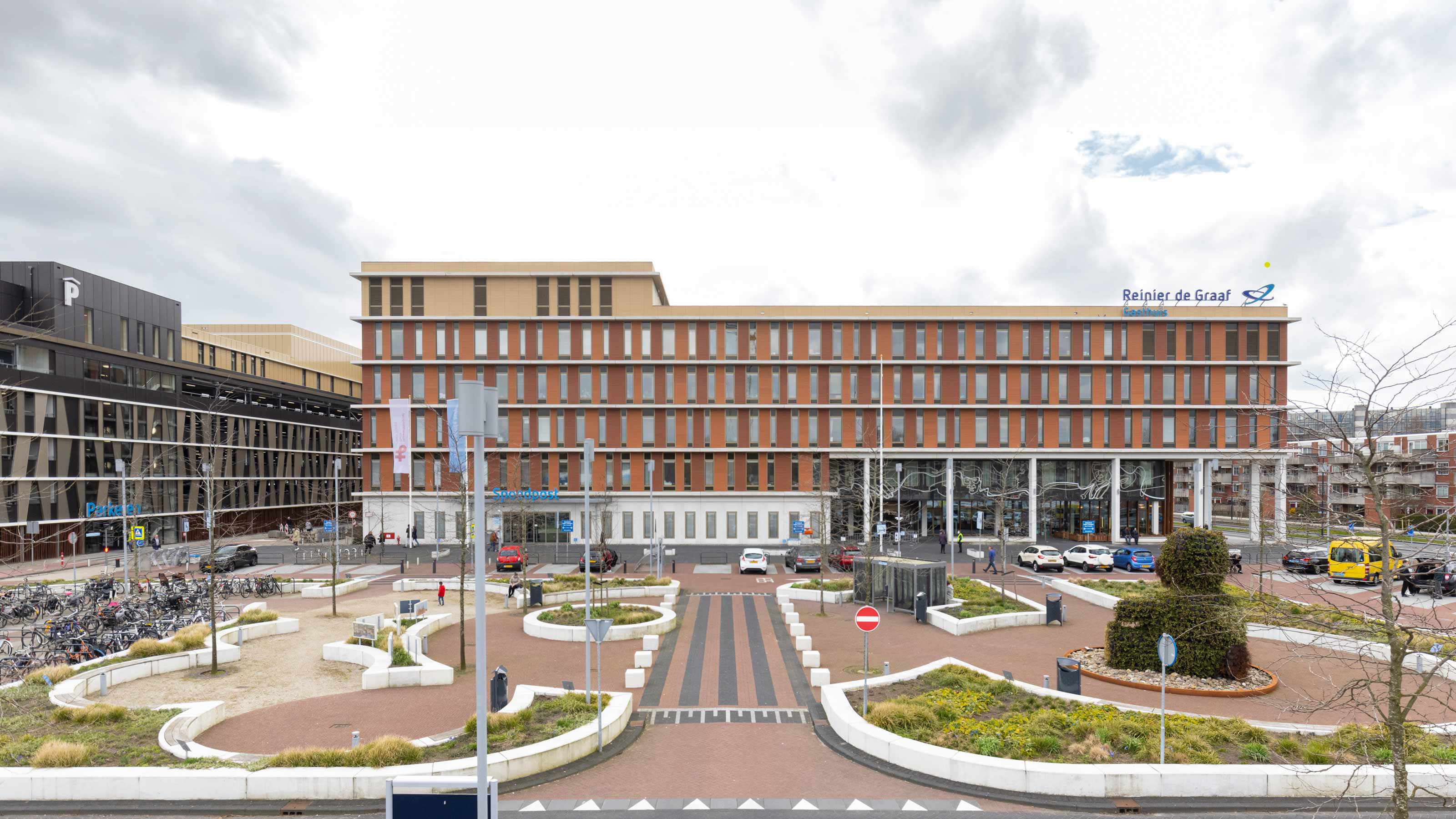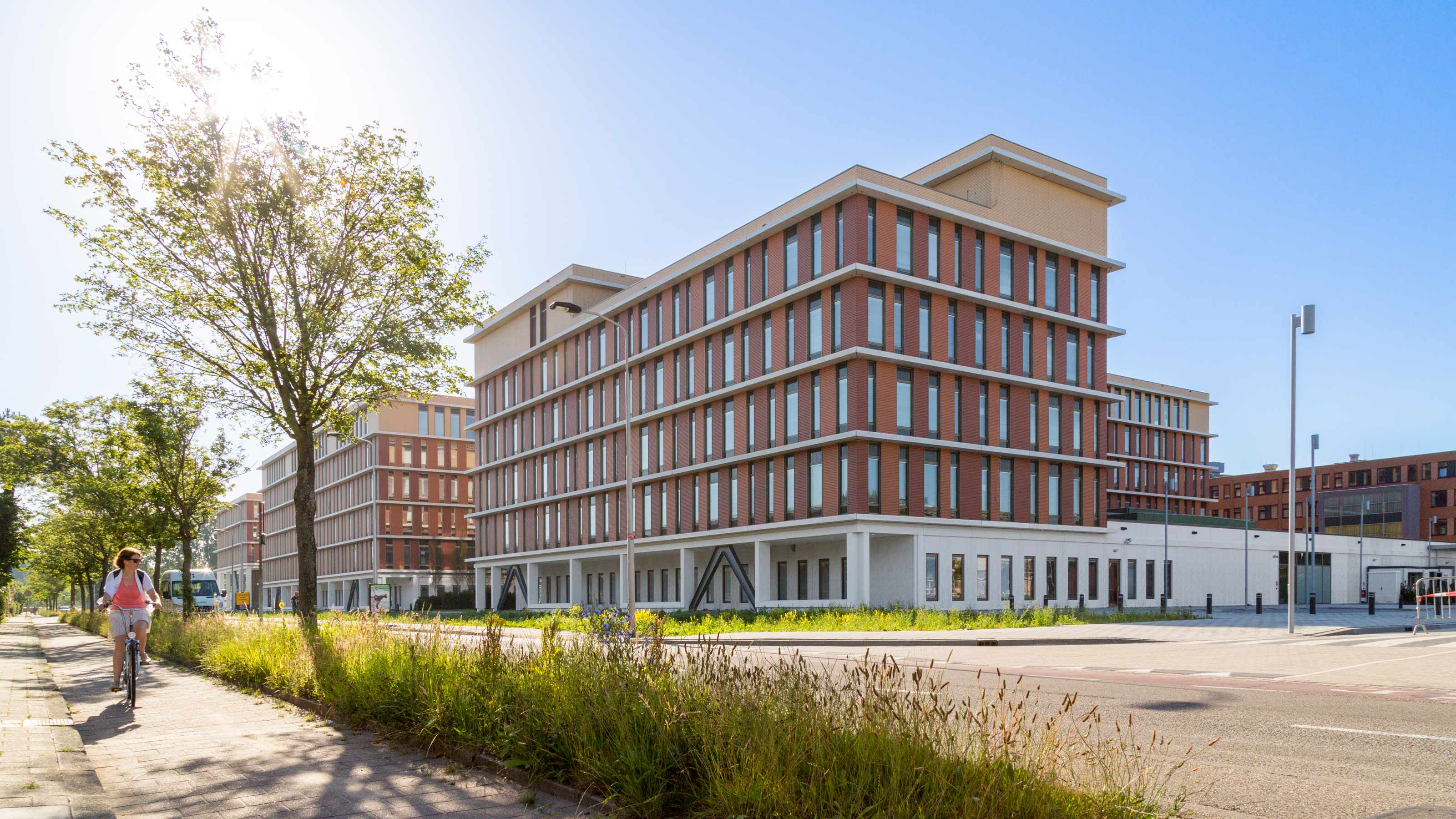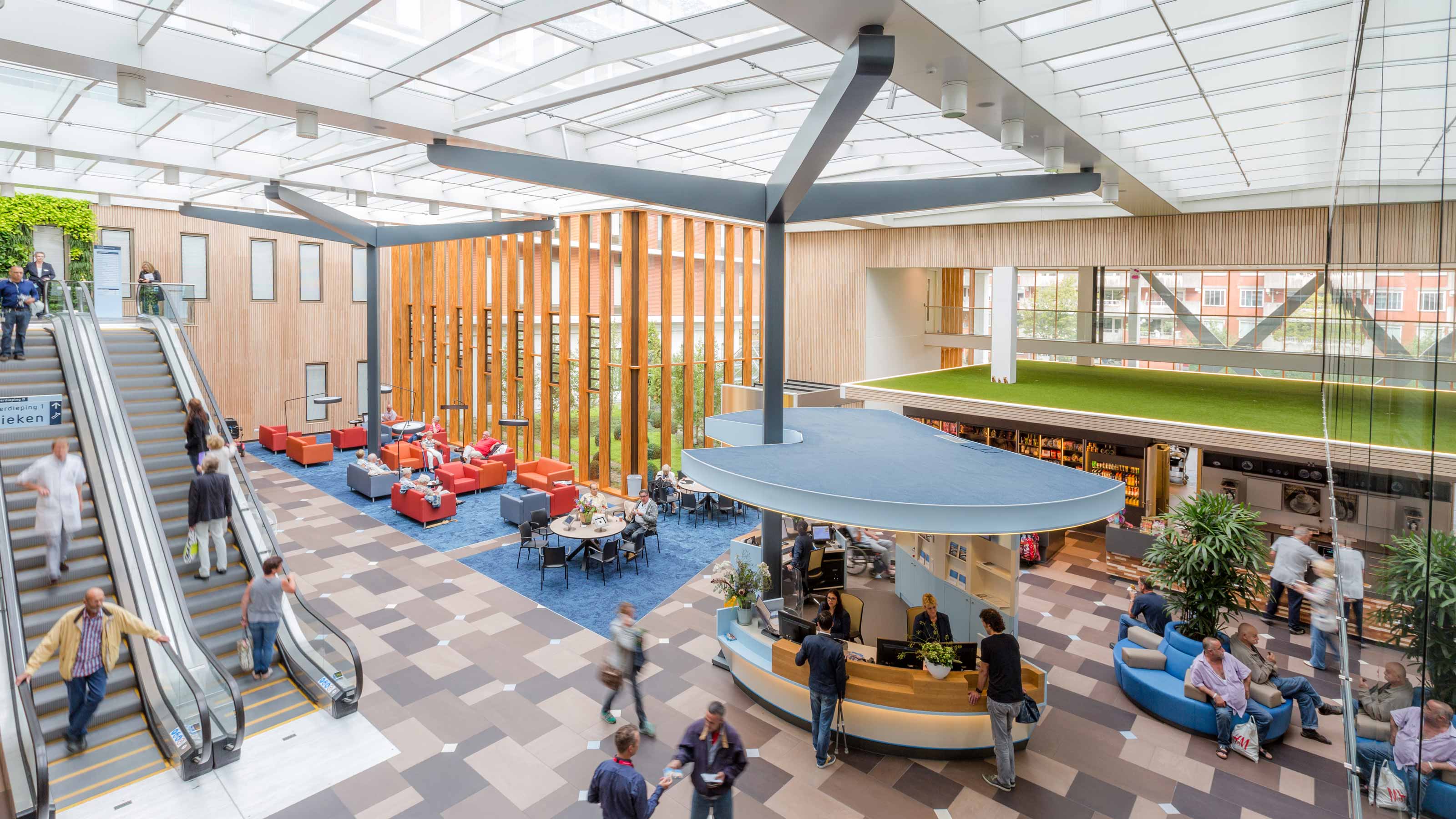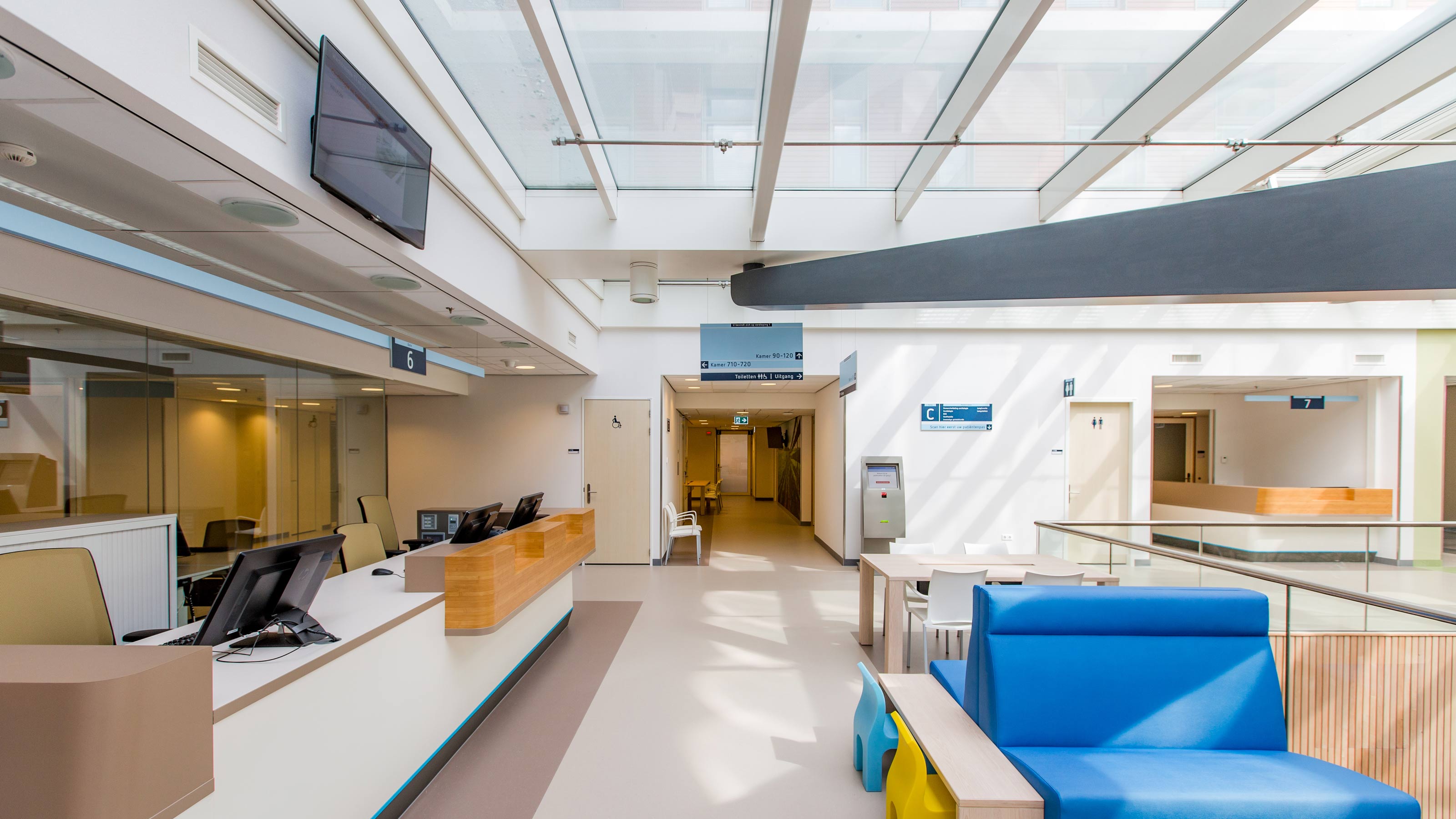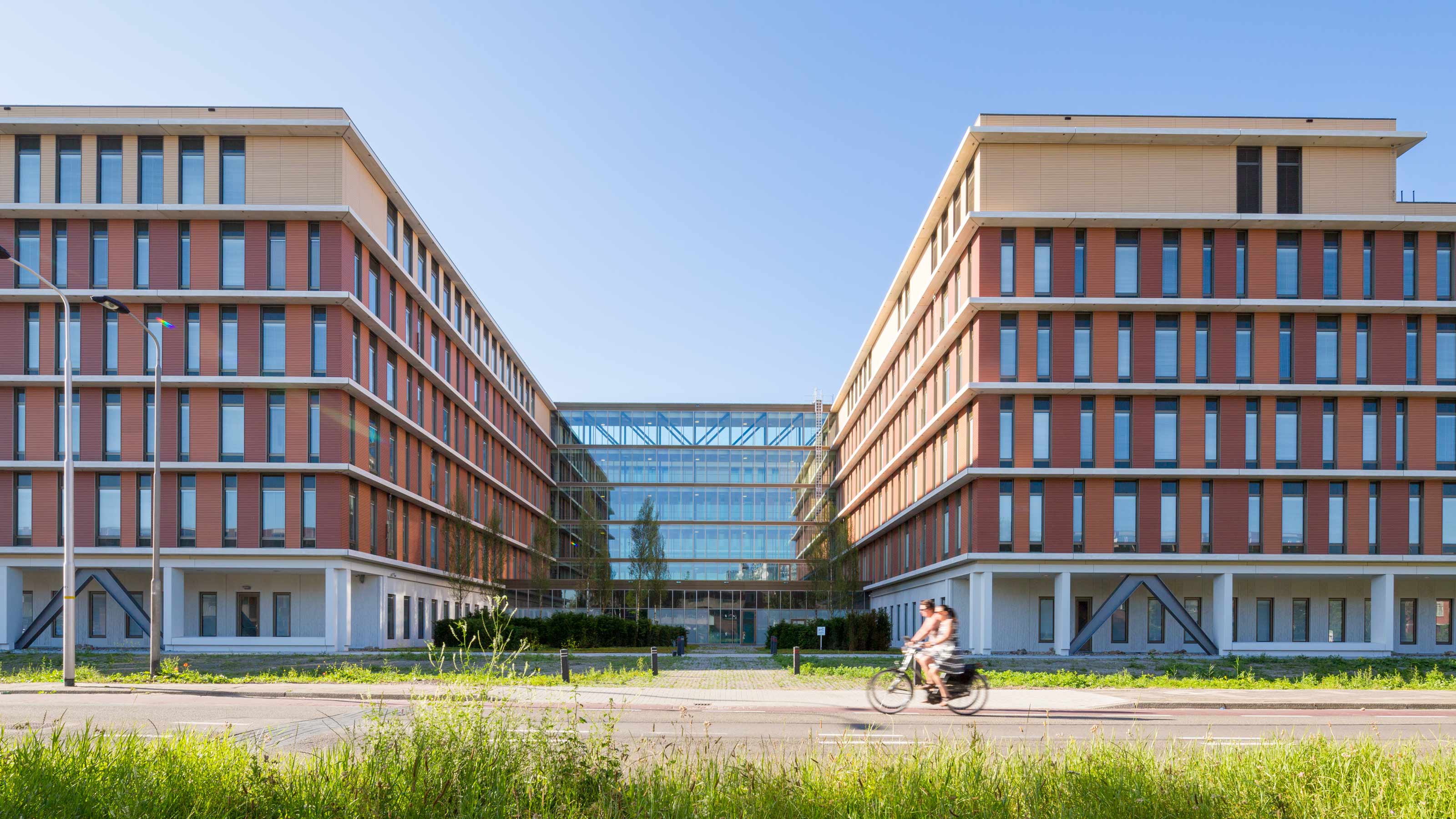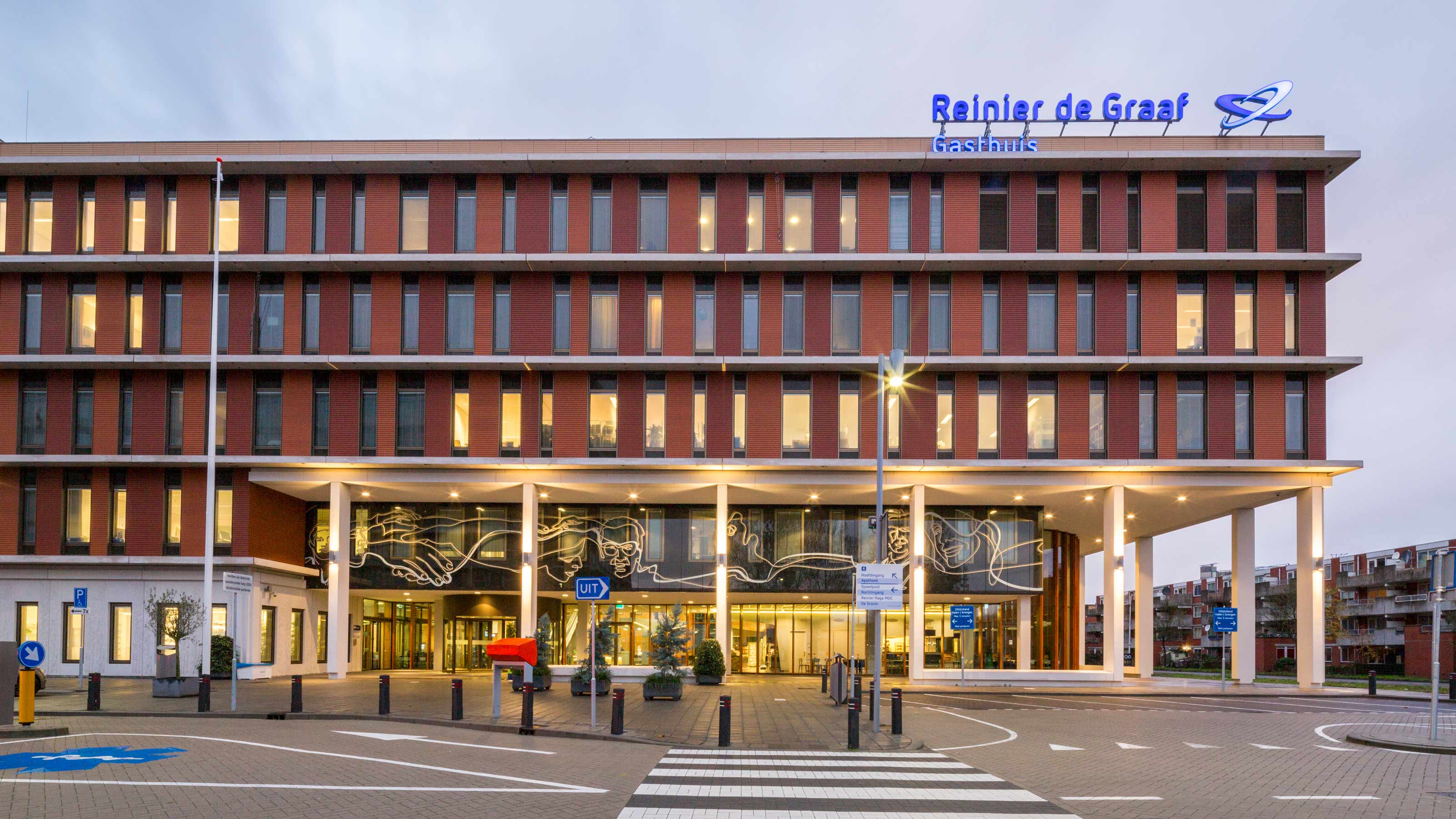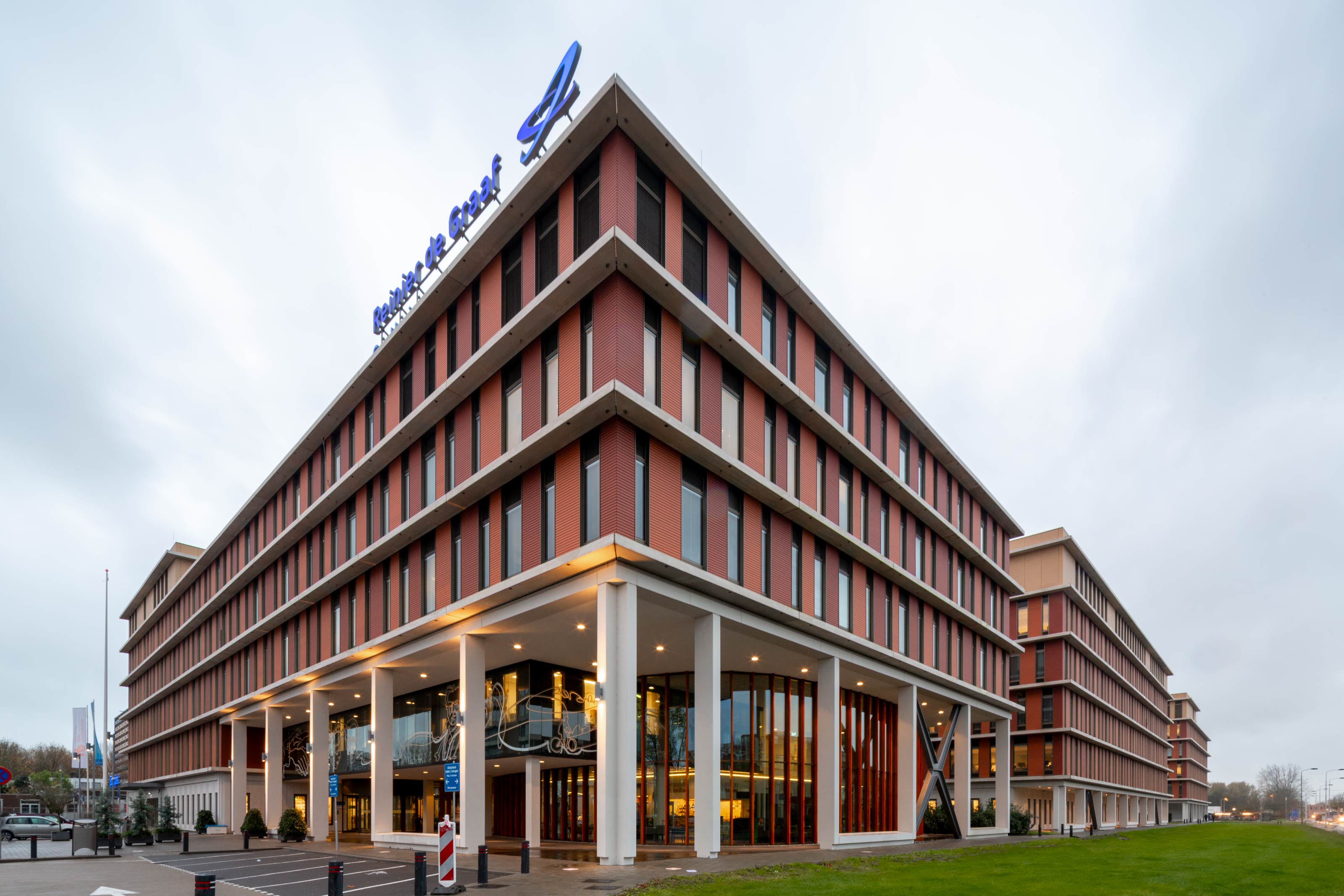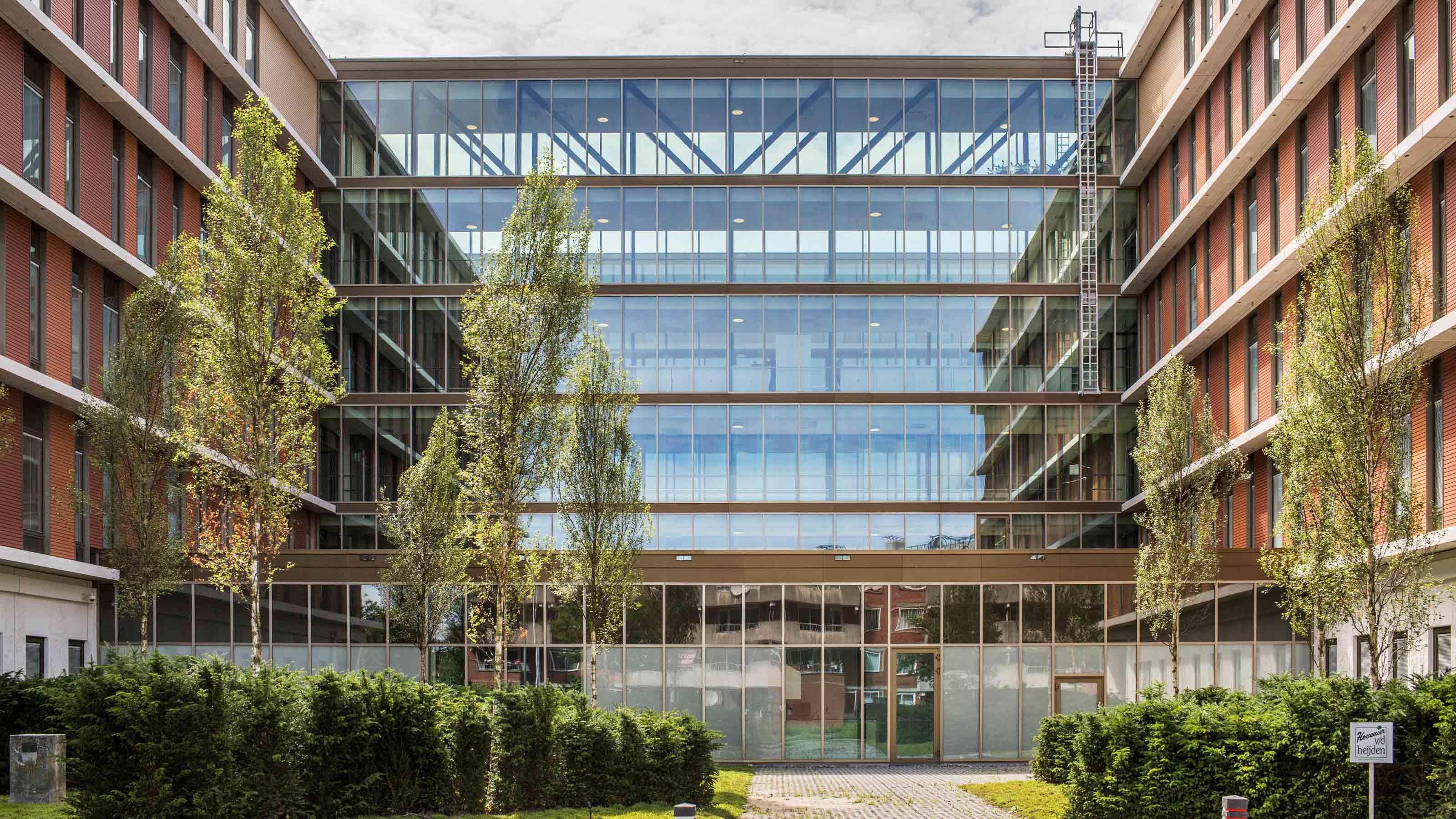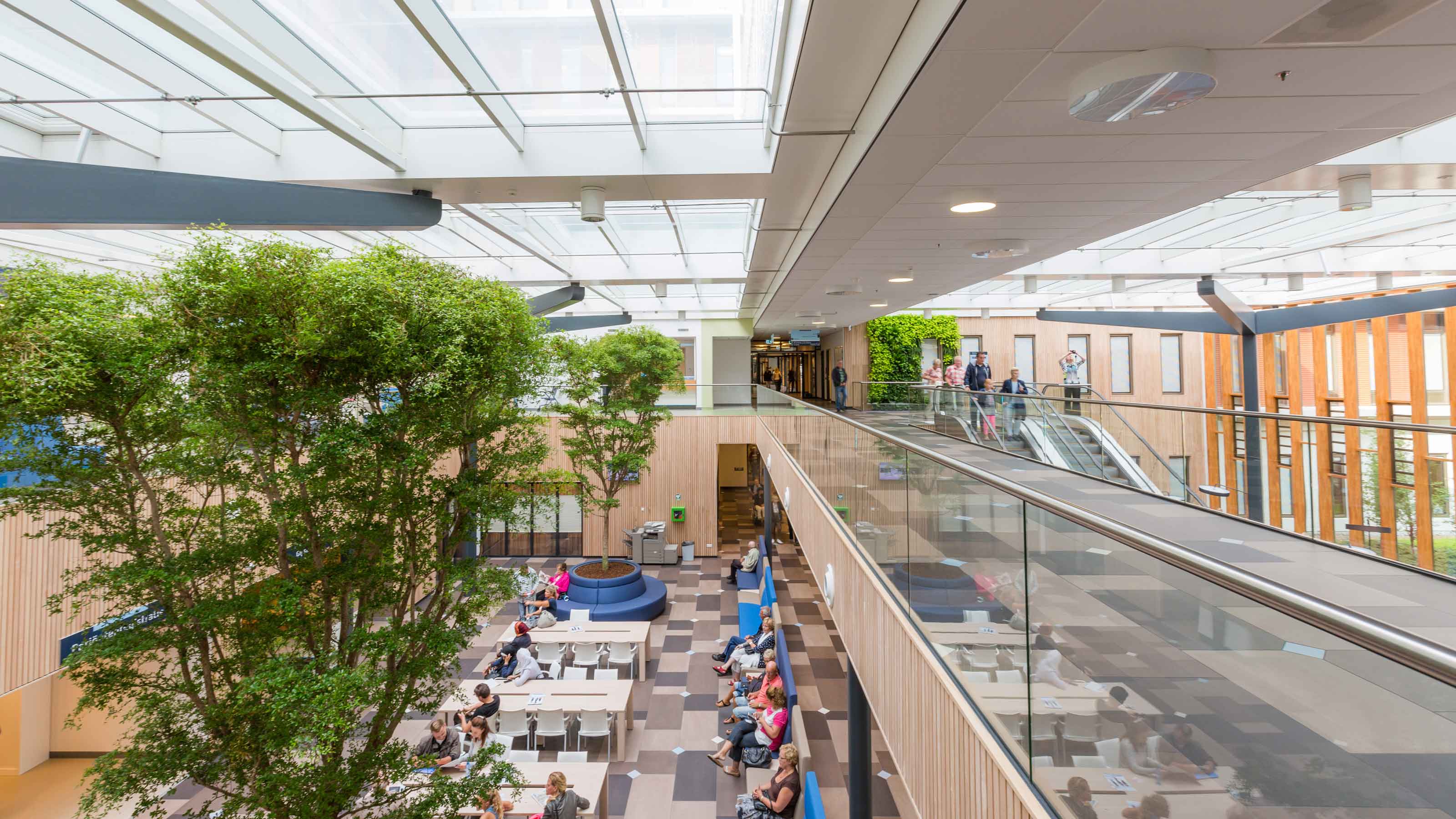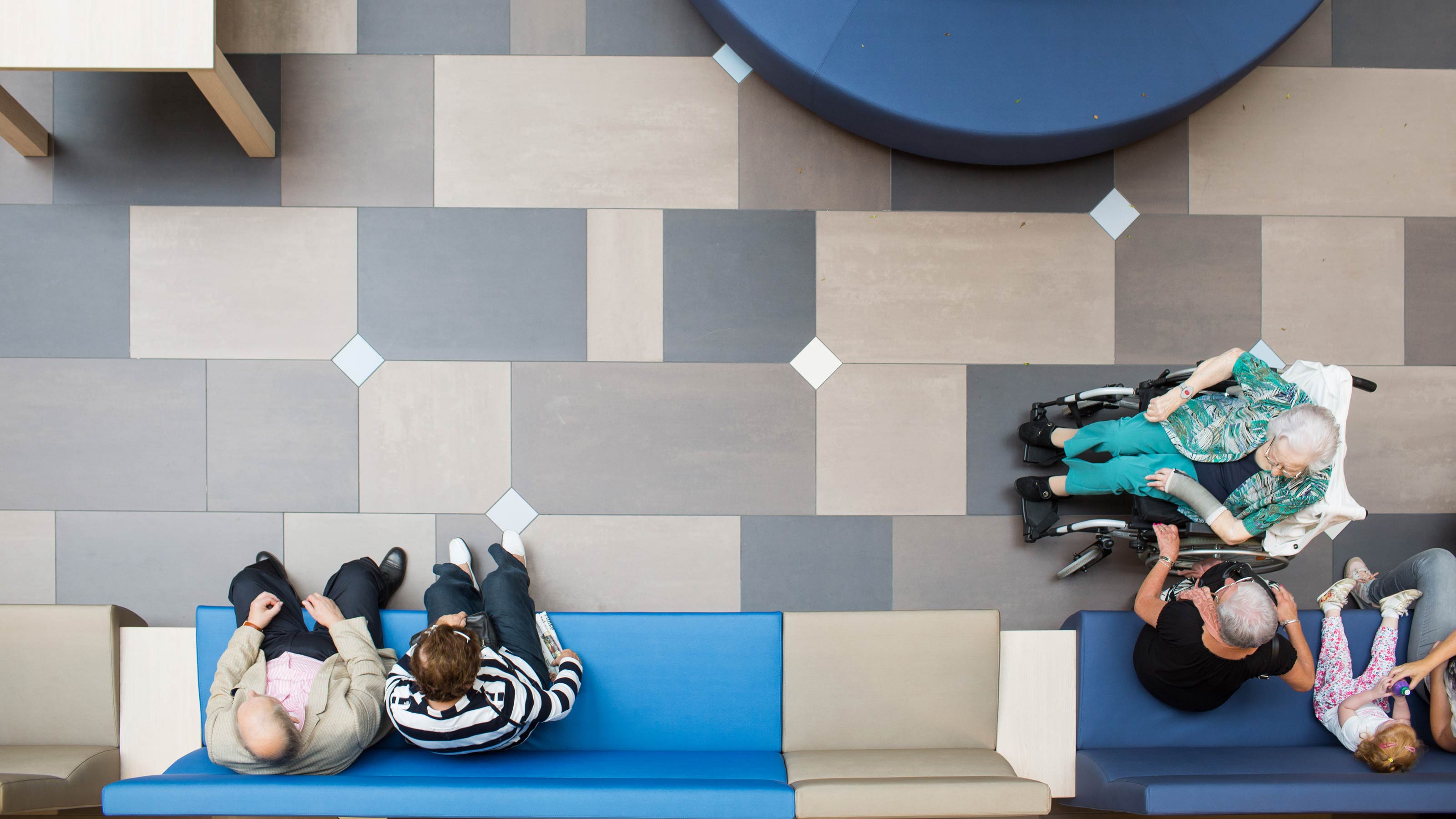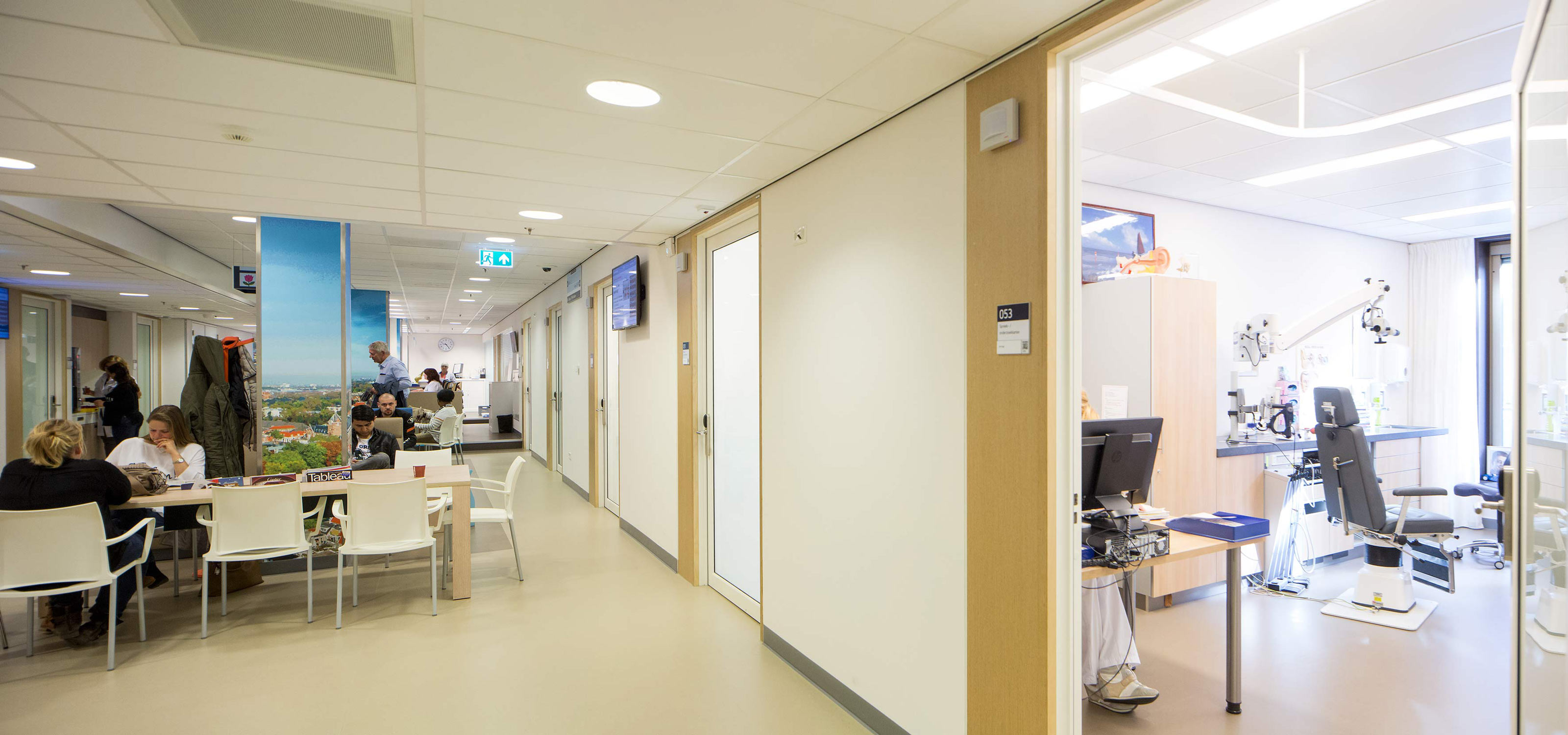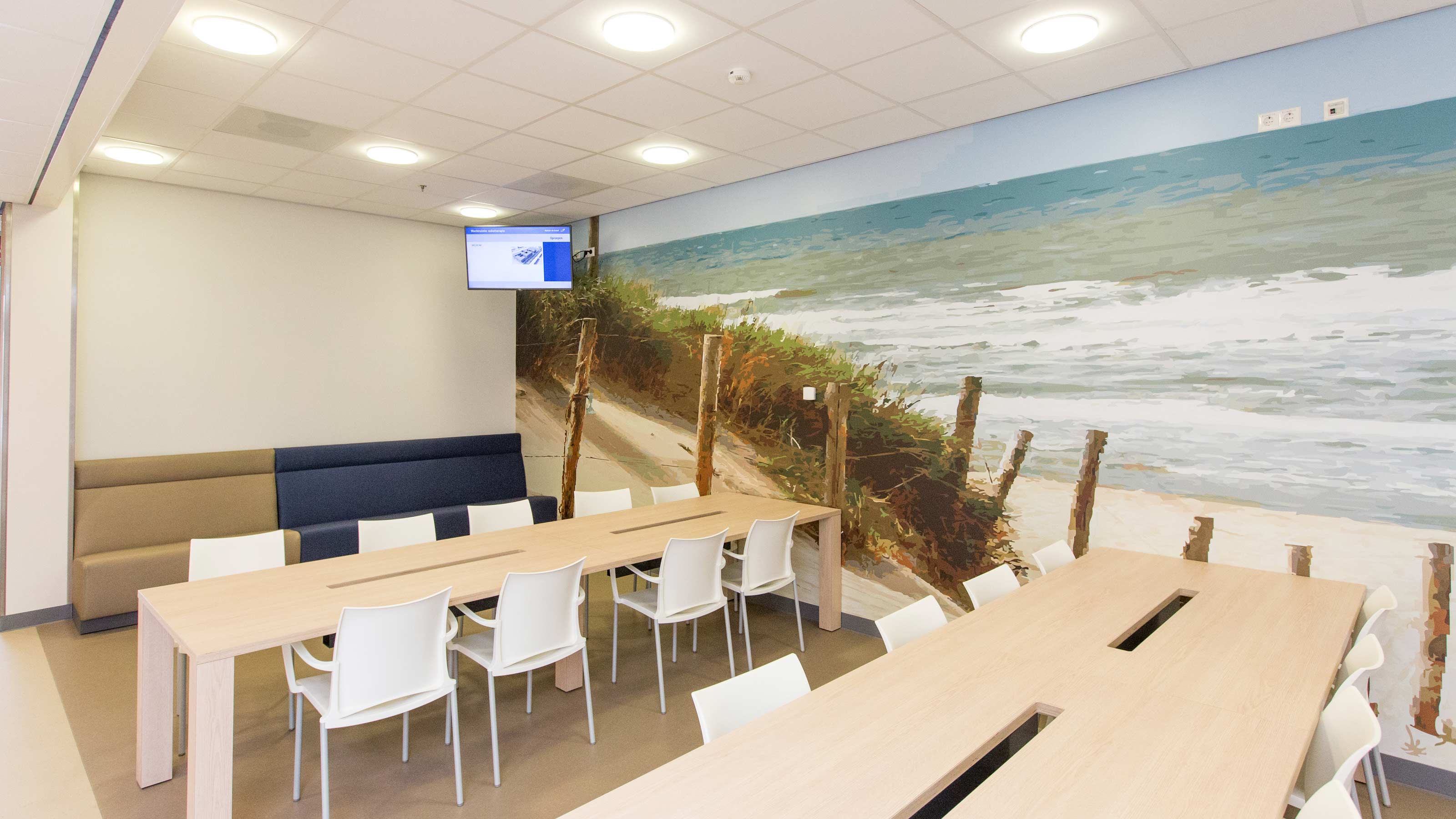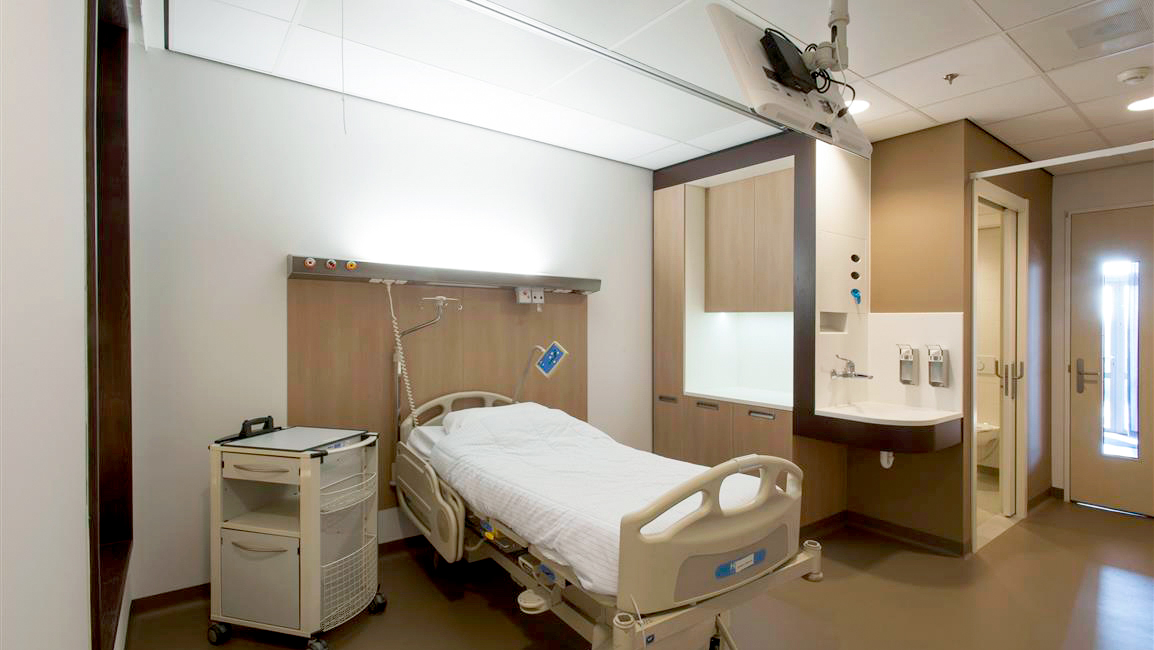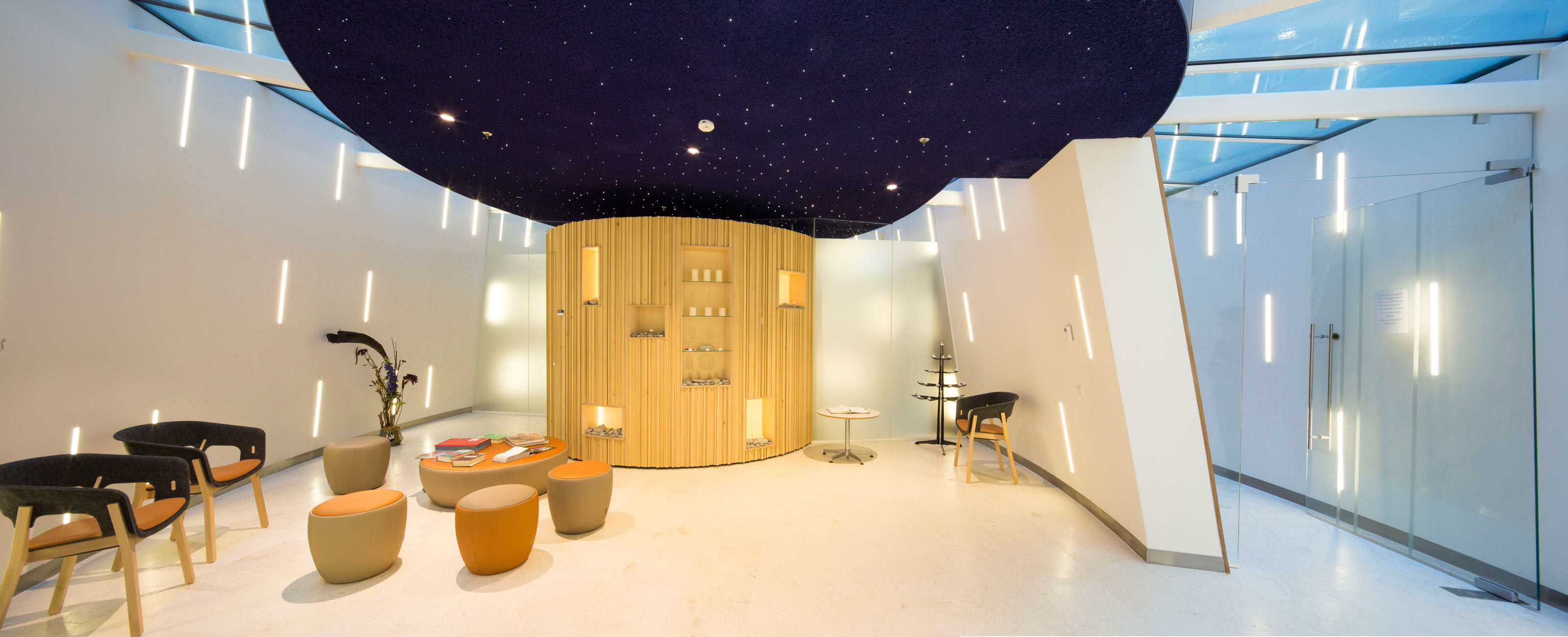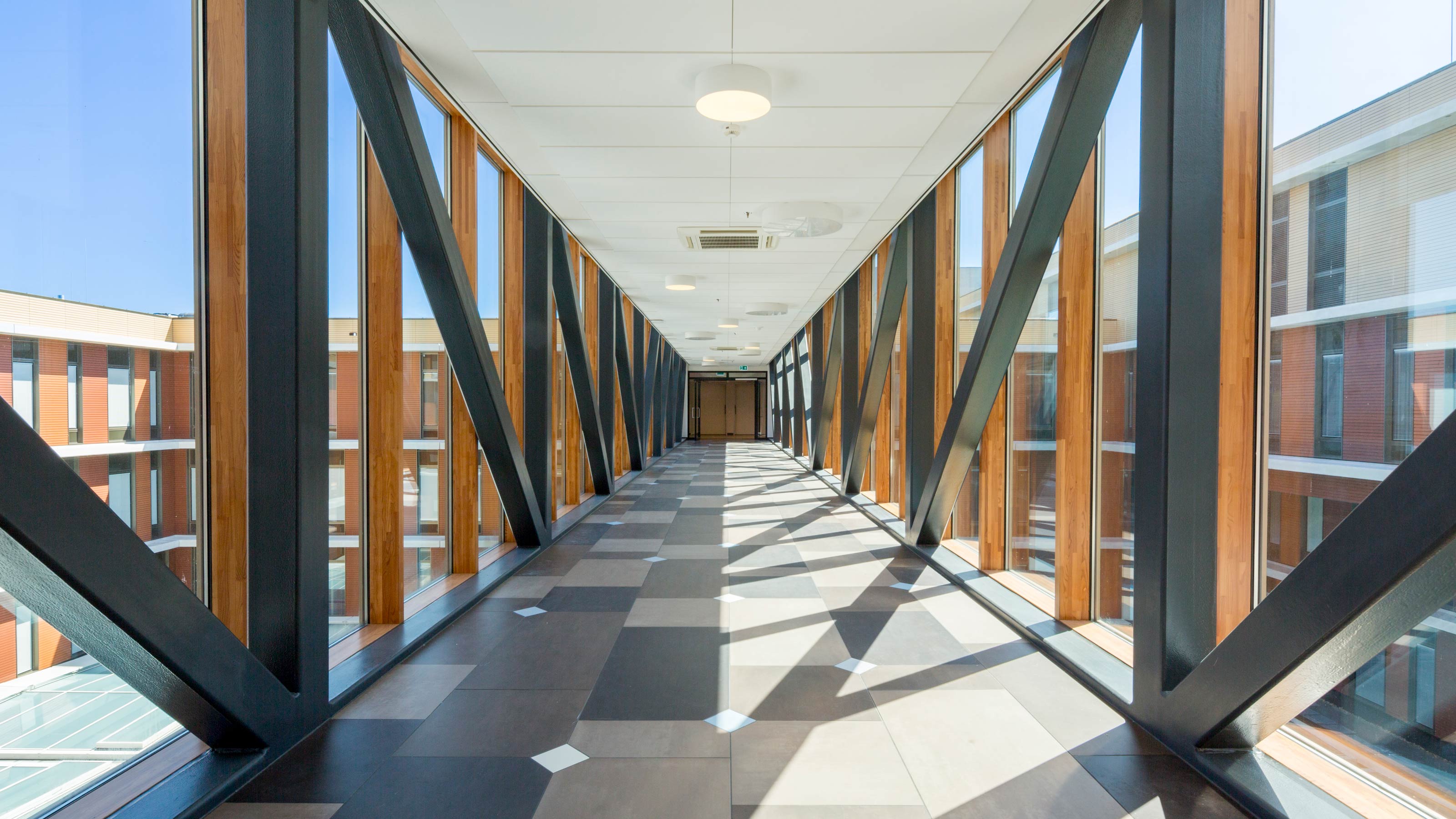A hospital were connectivity and hospitality are key
In the new Reinier de Graaf Hospital, connection and hospitality are central themes. Due to its connection with the healthcare region, the hospital references the traditions and characteristics of the city of Delft in various ways. The clearly organised building is designed in the shape of a caduceus, ensuring all departments are easily accessible.
View the entire projectThe Reinier de Graaf Hospital aims to become the most connected hospital in the Netherlands with its new facility in Delft. A patient-friendly and compact hospital that exudes a sense of connection was the guiding principle for the design of the Reinier de Graaf Hospital in Delft. EGM translated this vision into a design where openness, connection, and the city of Delft play key roles.
The Rod of Asclepius as a symbol of connection
The building’s basic form is inspired by the Rod of Asclepius, the ancient Greek symbol of medicine. The departments ‘wind’ around the central axis, which connects the building sections on all floors. This ensures that all departments are easily accessible. Additionally, this design allows for courtyards and interior gardens, providing more natural light and pleasant views.
Historic Delft as a source of inspiration
The hospital reflects the distinctive tradition and culture of its home city, Delft, and its surroundings in several ways. Interior elements are inspired by Delftware (Delft Blue pottery), and the building’s colour palette is influenced by Vermeer’s painting The Milkmaid. Externally, the façade design, with its rhythm, materials, and subtle colour nuances, references the iconic Delft canalside houses and the surrounding 1960s high-rise buildings. These defining features create a recognisable and unique building.
Involvement and collaboration
The staff played a vital role in the plans for the new hospital. Representatives of the medical staff were involved in the design process from the initial stages, contributing ideas and feedback. This involvement, along with the strong collaboration between the client and all stakeholders, ensured that the hospital was delivered within budget and on schedule in just five years—an exceptional achievement!
Providing a sustainable contribution to society goes beyond aesthetics in this project. In many ways, the new Reinier de Graaf Hospital also revitalises its surroundings.
Eric Wendel, partner architect at EGM Architects in BAZ
Sustainable and energy-efficient
Sustainable energy use was a key focus in the integrated design. For instance, the hospital is the first in the Netherlands to utilise a Pharmafilter, a sustainable water purification and waste processing system. Additionally, environmental impact is minimised through the use of renewable materials, such as natural rubber and, where possible, wooden window frames. Optimised systems, including radiant ceilings, heat recovery from ventilation, energy-efficient lighting, and a triple-glazed façade with integrated sun shading, further reduce energy consumption. With these measures, the Reinier de Graaf Hospital takes a significant step towards meeting Delft’s goal of becoming energy-neutral by 2050.
Awards
Hedy d'Ancona Price 2016 – Highly Commended
